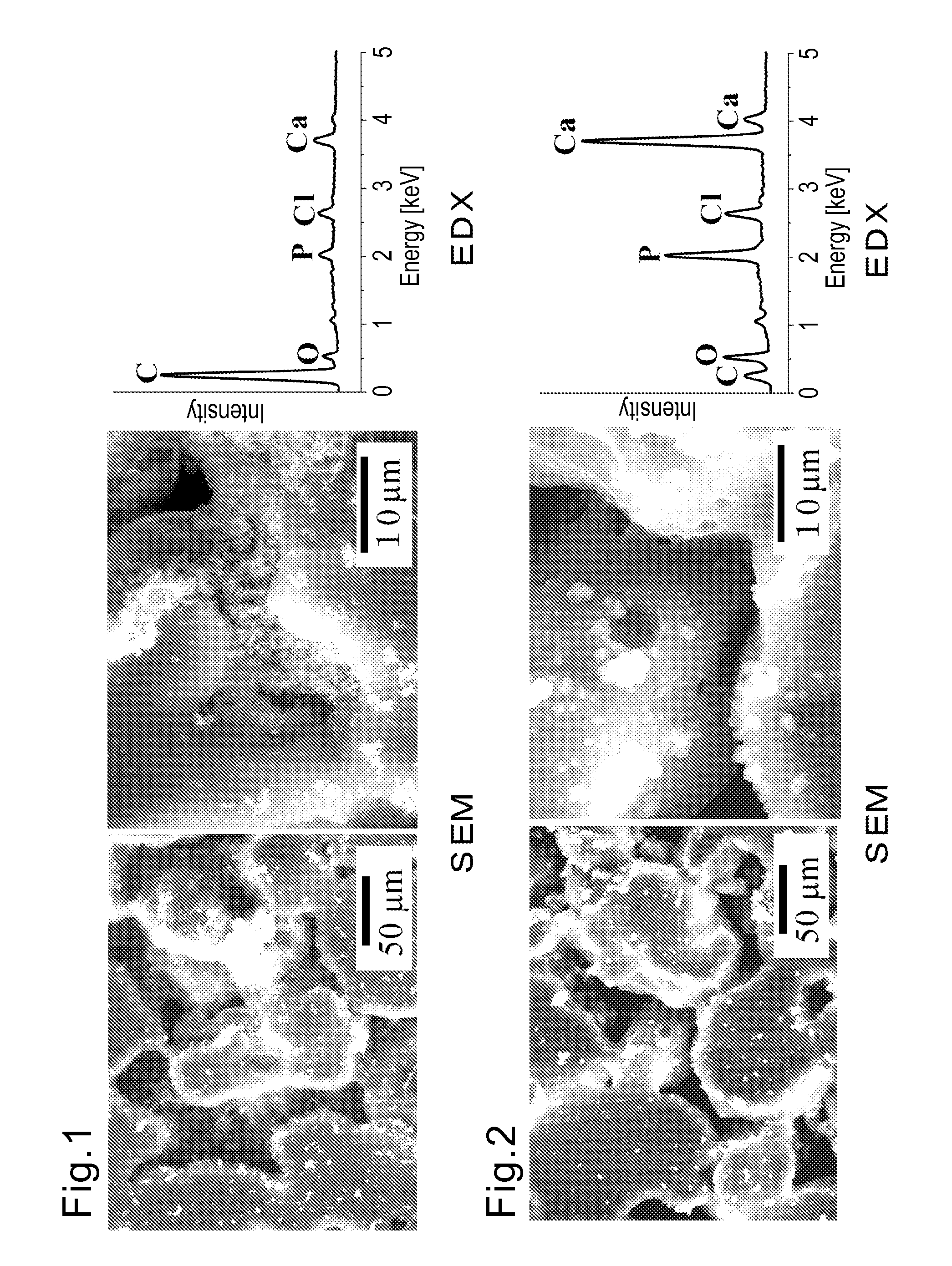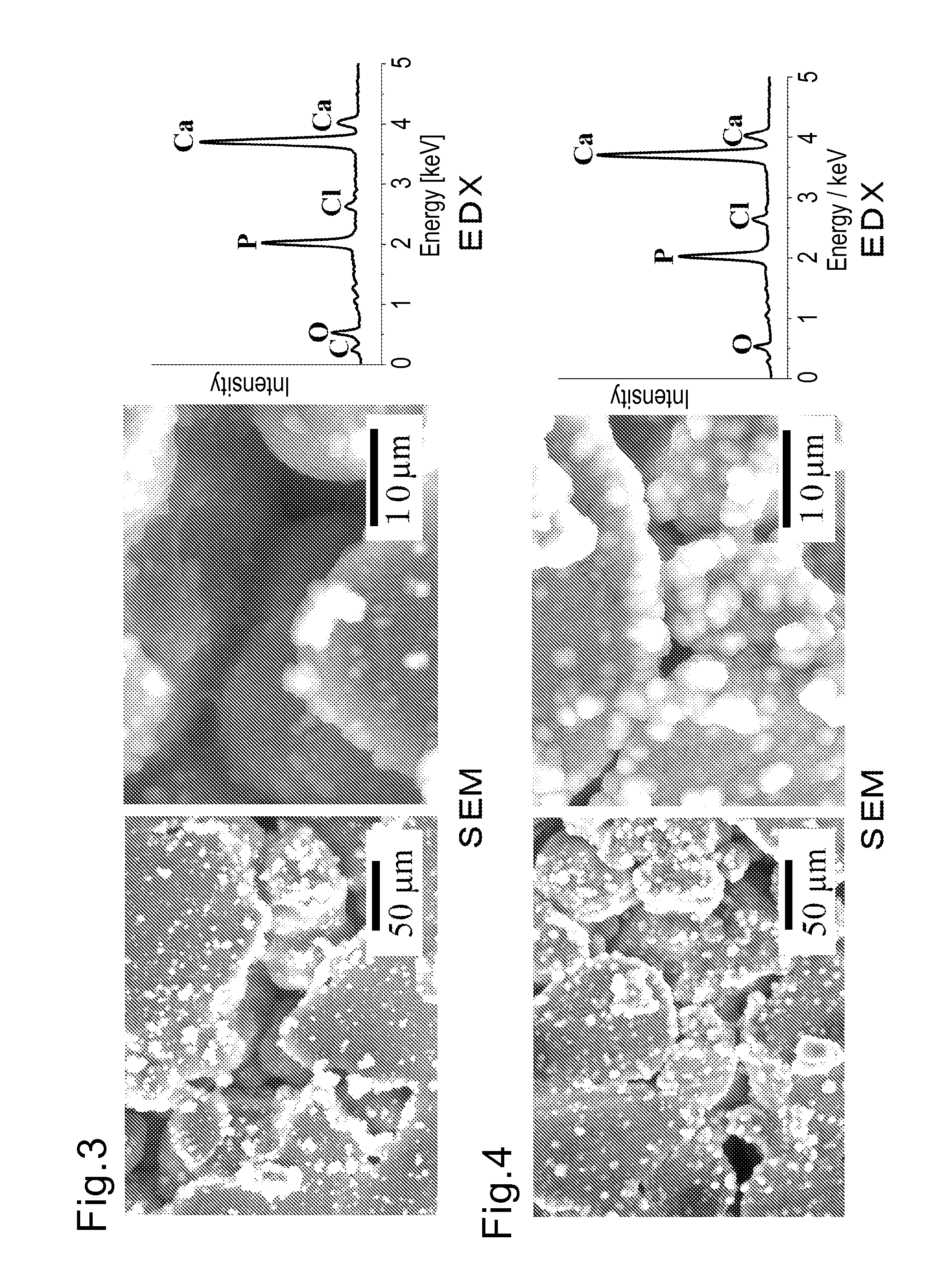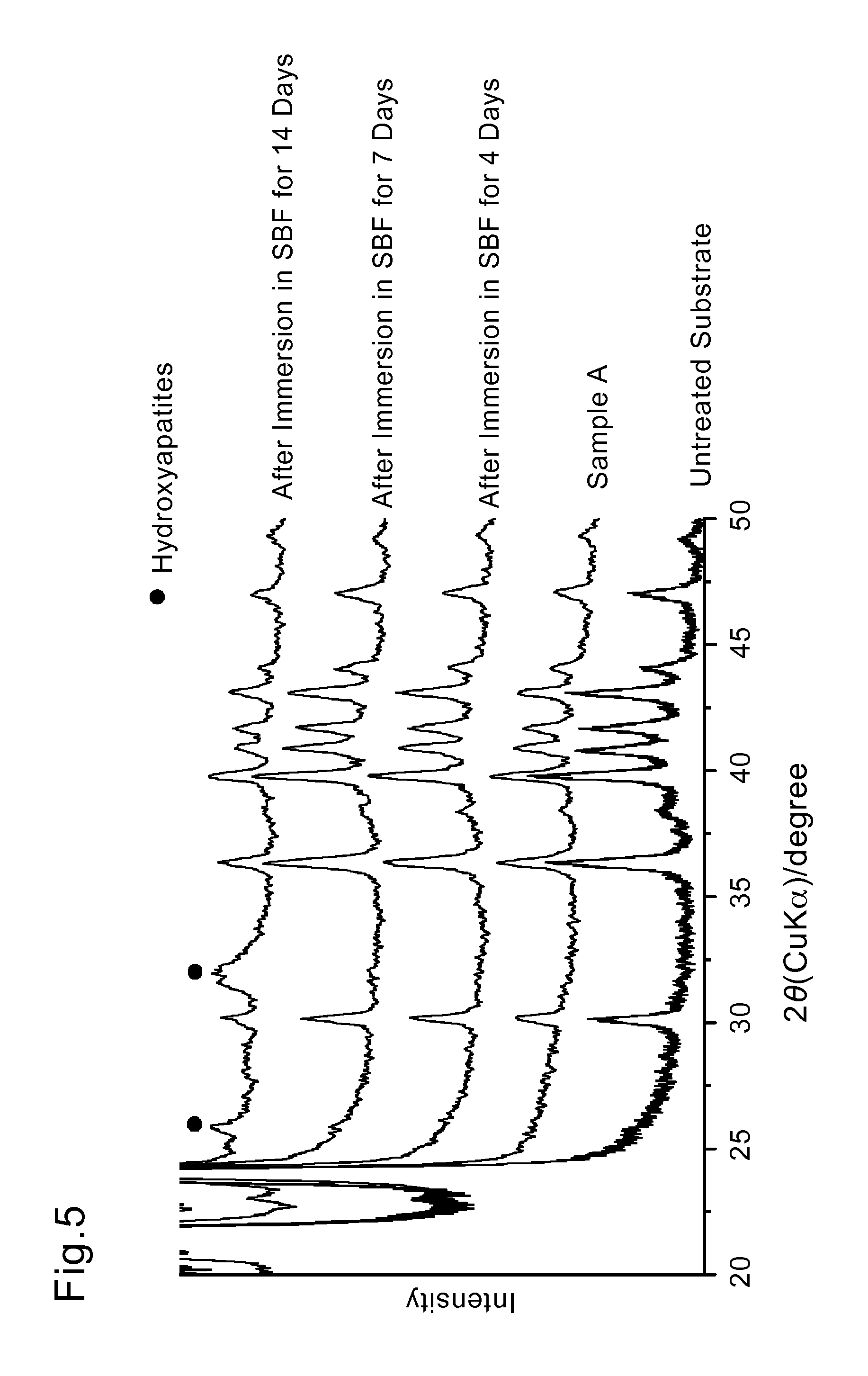Method for producing bioactive composites
a bioactive composite and composite technology, applied in the field of bioactive composite production, can solve the problem of not being able to strongly adhere bone tissues to the substrate, and achieve the effect of high adhesion strength
- Summary
- Abstract
- Description
- Claims
- Application Information
AI Technical Summary
Benefits of technology
Problems solved by technology
Method used
Image
Examples
example 1
[0060]A porous substrate, i.e., a 15 mm length×10 mm width×2 mm thickness porous shaped body comprising ultrahigh molecular weight polyethylene (UHMWPE) (manufactured by NITTO DENKO CORPORATION; having an average pore diameter of 17 μm and a porosity of 26%), was immersed in 2.0SBF whose pH was controlled to 7.0 by adding therein tris(hydroxymethyl) aminomethane under a liquid temperature of 36.5° C., and was subjected to a degassing treatment using a vacuum pump. Subsequently, tris(hydroxymethyl) aminomethane was added to the 2.0SBF having immersed therein the substrate to control the pH to 8.2 at 36.5° C. (at which point it became white clouded in the 2.0SBF), and the resulting product was allowed to stand still for 24 hours. After passage of 24 hours, the substrate was taken out from the 2.0SBF, rinsed with ultrapure water, and air dried. Then, the substrate subjected to the treatment above (Sample A) was immersed in 1.0SBF (pH 7.4) at 36.5° C. for 14 days to study its bioactivit...
example 2
[0066]Experiments were conducted under the conditions similar to those used in Example 1, except for using, as the solution for depositing fine particles containing hydroxyapatites as the major components inside the fine pores of the substrate, 1.0SBF whose pH was controlled to 7.0 by adding therein tris(hydroxymethyl) aminomethane under a liquid temperature of 36.5° C., and controlling the increase of pH values to 7.2, 7.4, 7.6, 7.8, and 8.0 by adding tris(hydroxymethyl)aminomethane at 60° C. As a result, it has been found that bioactivity can be imparted to the substrate under the above conditions, and that a coating layer containing hydroxyapatites as the major component can be formed and grown on the surface of the substrate.
example 3
[0067]Experiments were conducted under the conditions similar to those used in Example 1, except for using a 15 mm length×10 mm width×3.2 mm thickness porous shaped body comprising ultrahigh molecular weight polyethylene (UHMWPE) (manufactured by Mitsubishi Plastics, Inc.; having an average pore diameter of 9 μm and a porosity of 52%) as a porous substrate. FIG. 7 shows the results obtained by SEM observation of the surface of the substrate subjected to a treatment for imparting bioactivity (Sample B), and FIG. 8 shows the results obtained by SEM observation of the surface of Sample B immersed in 1.0SBF for 14 days. Furthermore, FIG. 9 shows the results obtained by TF-XRD observation of the surface of an untreated substrate, Sample B, and Sample B immersed in 1.0SBF for 14 days. As FIG. 7 clearly shows, numerous fine particles of nanometer order containing amorphous calcium phosphate as the major component were found to deposit and adhere to the inside of the fine pores of the subst...
PUM
 Login to View More
Login to View More Abstract
Description
Claims
Application Information
 Login to View More
Login to View More - R&D
- Intellectual Property
- Life Sciences
- Materials
- Tech Scout
- Unparalleled Data Quality
- Higher Quality Content
- 60% Fewer Hallucinations
Browse by: Latest US Patents, China's latest patents, Technical Efficacy Thesaurus, Application Domain, Technology Topic, Popular Technical Reports.
© 2025 PatSnap. All rights reserved.Legal|Privacy policy|Modern Slavery Act Transparency Statement|Sitemap|About US| Contact US: help@patsnap.com



